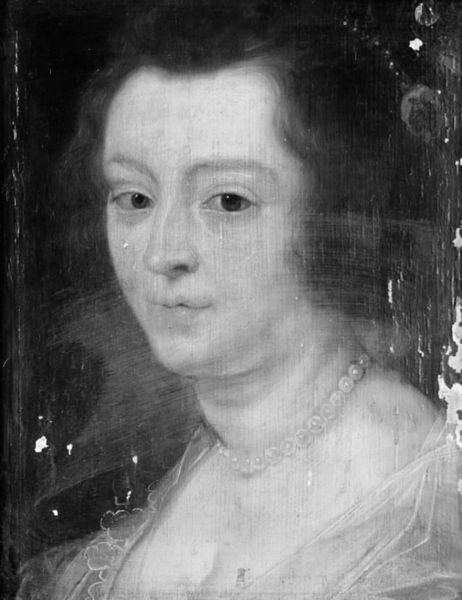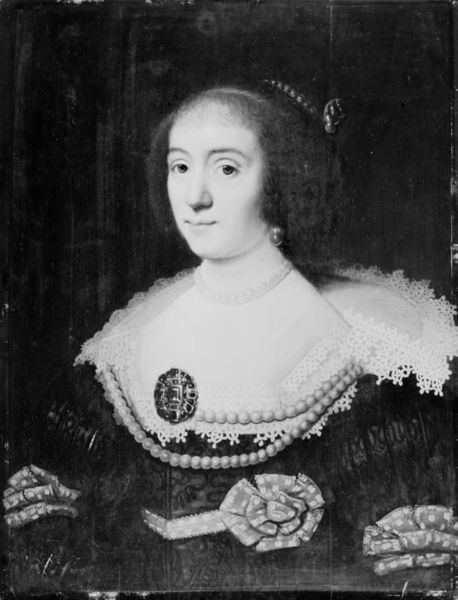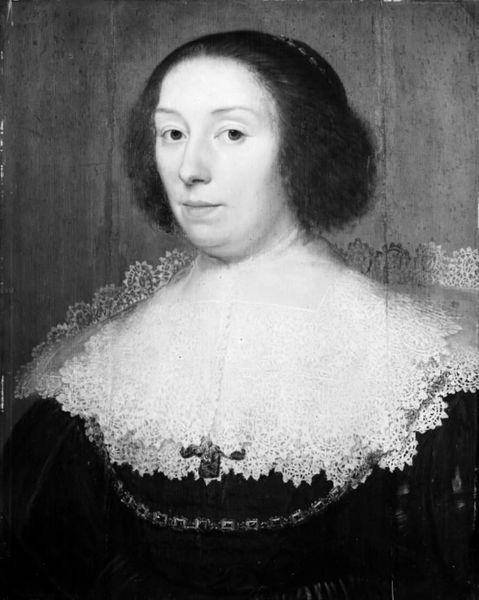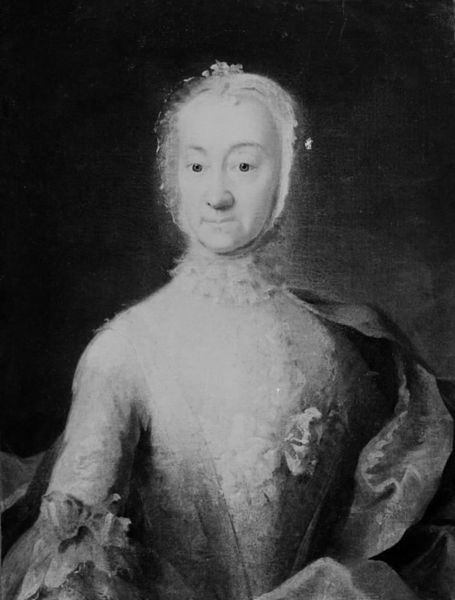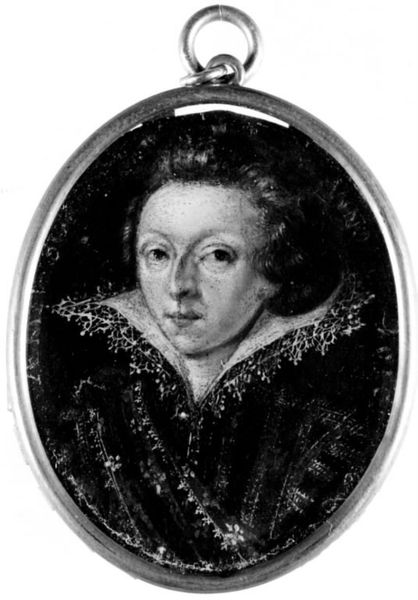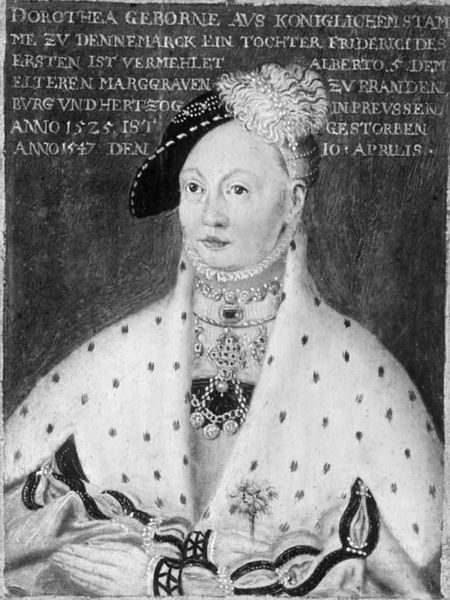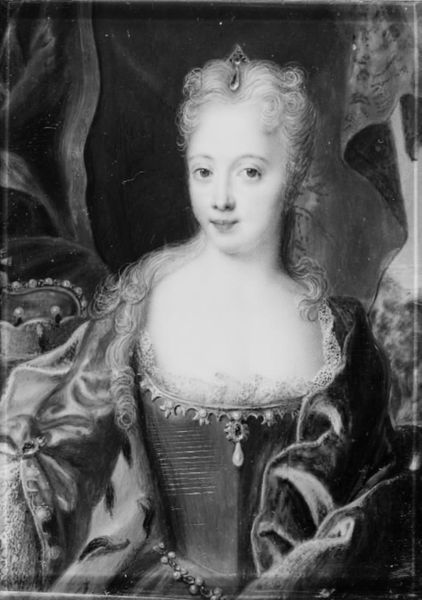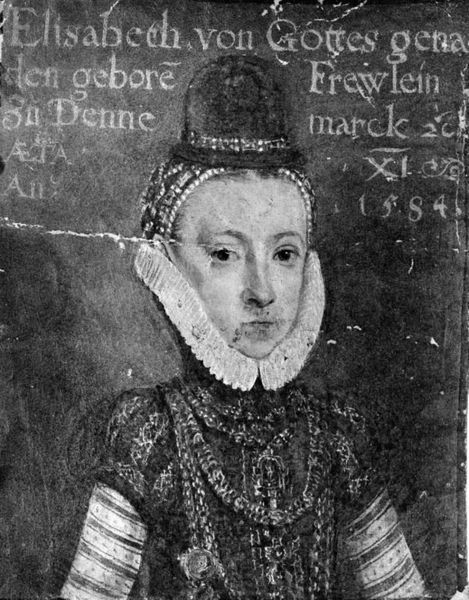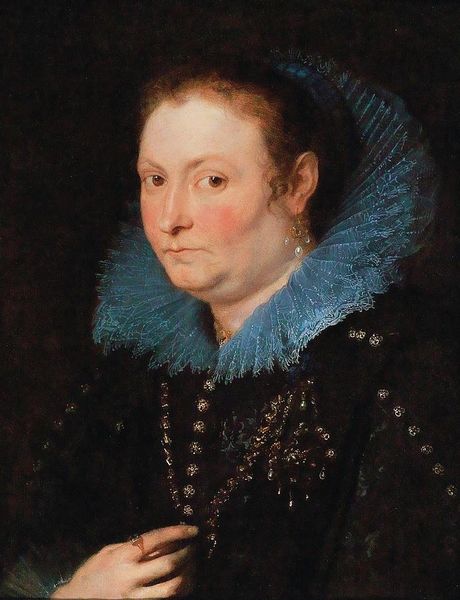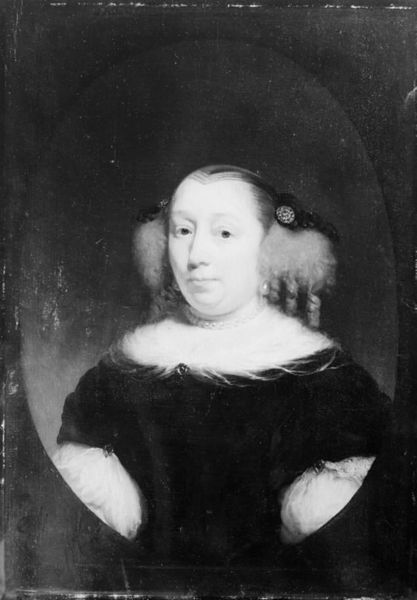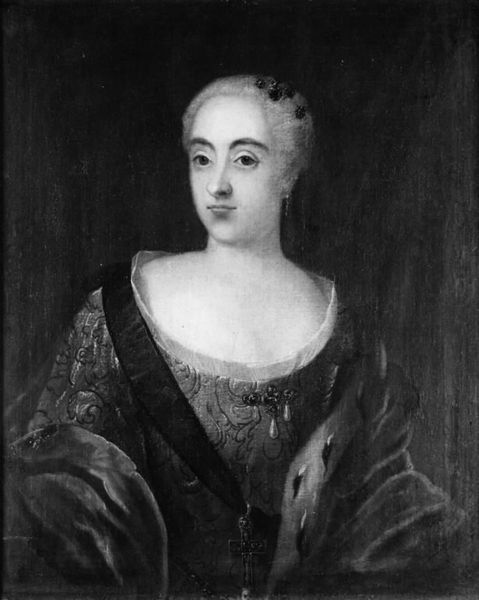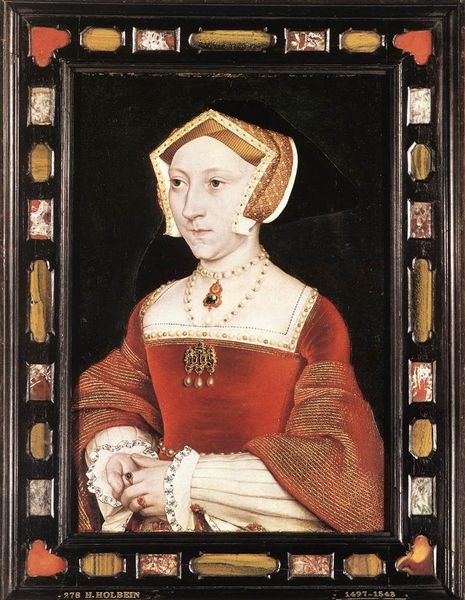
painting, oil-paint, wood
#
portrait
#
portrait
#
painting
#
oil-paint
#
charcoal drawing
#
wood
#
history-painting
#
academic-art
#
early-renaissance
Dimensions: 44 cm (height) x 36 cm (width) (Netto)
Curator: This is "Portrait of a Lady," a painting held here at the SMK, the Statens Museum for Kunst. It's documented as originating sometime between 1592 and 1890. Editor: The lady's gaze is so direct! The severe black hat, the crisp white collar, set against the stark wood panel...it almost feels confrontational, though perhaps that’s simply the condition of the work? Curator: Possibly. Its attribution to an anonymous artist definitely complicates our understanding. It also allows for multiple interpretations, depending on which historical context you focus on. It's painted with oil on wood, common for portraits during the Early Renaissance, however that date range complicates things somewhat. Editor: Agreed. This feels like an attempt to solidify power, but in whose hands? The sitter clearly holds some degree of social status, judging by the pearls and elaborate attire. I want to know what restrictions governed her life and if this portrait was a negotiation of that power, or simply compliance with societal expectation? Curator: The use of black and white accentuates the austerity, indicative perhaps of the constraints placed upon women of that era. Think about sumptuary laws and how visual markers of class were meticulously enforced and recorded through such portraits. Consider also how art history has privileged the male gaze and what might happen if we reframed her. Editor: I suppose what’s striking is how easily this piece could fall into being labeled as historical and nothing more. What's exciting is to look beyond just labels, to delve into the ways even a subdued portrait such as this one speaks volumes about the construction of identity, about social power structures. Curator: Exactly. And its presence in a public museum serves as a point of dialogue, forcing us to reassess inherited narratives about art, about class, and the female experience. It serves not only as a visual historical artifact but as an active component of a much wider cultural and socio-political sphere. Editor: It does make me wonder about other, invisible portraits never made. Images and experiences that never had the opportunity to be visible. Thank you for enriching this observation of class and history for me. Curator: Likewise. It reminds us to critically examine how institutions validate certain works and exclude others. Thank you.
Comments
No comments
Be the first to comment and join the conversation on the ultimate creative platform.
